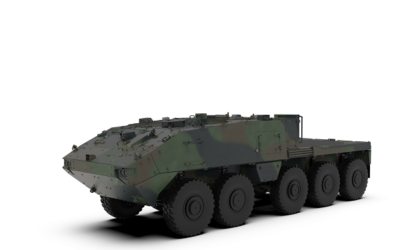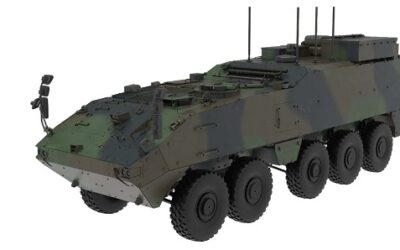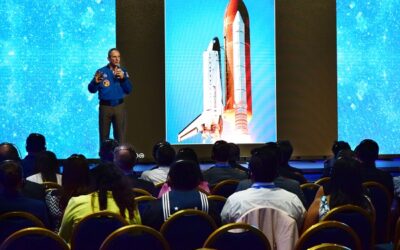2018 AUSA Global Force Symposium & Exposition End-of-Day Report (Day 2 27 March)
Each of the current 15 US Army PATRIOT battalion headquarters had command and control (C2) connectivity with four of the service’s 60 fire units, with the C2 nodes further providing connectivity to an US Air Force Air Operations Center and other headquarter elements of the joint force. That 1:4 ratio of headquarter-to-fire units started to decrease in 2017.
A desire for increased operational flexibility compelled the army and Raytheon to advance the fielded construct of higher echelon PATRIOT C2, according to Bob Kelley, Senior Manager for Integrated Air & Missile Defense Business Development and Strategy at Raytheon. Responding to current operational patterns, one, two or even three fire units have deployed, in some instances, outside the continental US. “Every one of those fire units needs a battalion-level command and control, to be able to connect to the joint force,” Mr. Kelley pointed out.
The US Army, in an effort to increase its PATRIOT C2 capacity, placed Raytheon on contract to deliver hardware and software programmed upgrades and enhancements.
To bolster the hardware part of the C2 equation, the company’s Tewksbury, Massachusetts-based systems business has developed Dismounted PATRIOT Information Coordination Center (DPICC). The current centre in the Army’s force structure is truck mounted, with a generator and other components of the logistic tail. Mr. Kelley, speaking from the background of serving 27 years in the Army Air Defense Artillery branch, noted Raytheon’s dismounted version is housed in seven transit cases, and, “can be emplaced anywhere that has, the proper temperature, reliable power and communications ‘plug-ins’ you need to communicate with higher and lower echelons. And it takes 10 people to operate for sustained periods of time.”
This requirement contrasts with the 100+ personnel and larger logistics footprint needed to operate the legacy PATRIOT C2 system.
Five DPICCs have been fielded to the US Army: one this past December to US Pacific Command; one this January to US European Command; and three this month to Fort Bliss, Texas. “Now the Army is down to a 1:3 ratio –20 headquarter nodes for the 60 units. And this increased C2 capacity allows the Army to deploy the PATRIOT in a more flexible and scalable fashion,” he added.
With regard to software upgrades, Raytheon is enhancing current PATRIOT displays, modernising how the system presents information to the soldier. During a new screen-to-old screen display comparison at the company’s booth (#1129), Mr. Kelley pointed out while the same information is available on both displays, “the content is presented to the operator on the new screen in a modern, intuitive, 3-D manner.”
The software upgrades provide three more specific upgrades for the army PATRIOT force. The enhancements increase the “trainability” on the system, improving the human-to-machine interface. “The second thing, is it will make the operator more effective. We’re developing this by spending time with the operator asking, what information is most important to you when you have to make a split-second decision, and they told us. So, for example, we’ve created a critical information ‘dashboard’ and a Google-like search functionality, so they can better search for this information. We think this will help them make those critical decisions much faster,” the retired US Army colonel added.
And finally, the Raytheon-inspired upgrades will meet another service vision – to help make PATRIOT and THAAD systems interoperable. Mr. Kelley concluded: “To interoperate these systems on the battlefield, you need a display that allows the operator to have an understanding of a much greater geographic area than they are typically used to, or it was designed for.”
An initial PATRIOT display software enhancement is expected to be delivered to an unspecified theatre of operations in about 2020. A program-wide, full software display enhancement is not under contract.
Raytheon is gaining efficiencies for the PATRIOT display software enhancement by initially taking the technology baseline for the US Army’s Advanced Field Artillery Tactical Data System (AFATDS) software and modifying it accordingly.
Marty Kauchak

























